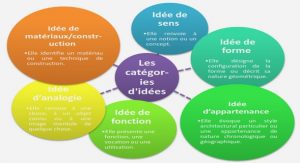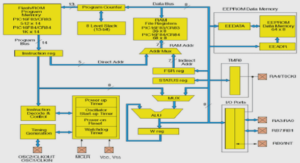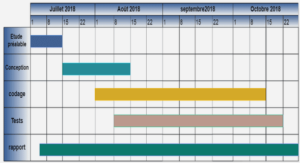SIGNIFICANCE OF LEARNER UPTAKE
Schmidt’s “noticing hypothesis”
Schmidt (1990, 1995) asserts that ‘noticing’ the formal properties (i.e., forms) in input is necessary for L2 learning to take place. In his theoretical discussion, he highlights the importance of conscious processes such as ‘awareness’ in SLA.
Schmidt (1990) distinguishes three levels of awareness; ‘perception2’, ‘noticing’ and ‘understanding’. Understanding occurs when a learner notices something and compares it to his current level trying to find similarities and gaps. Awareness at the level of understanding is facilitative but not necessary for second language acquisition (Schmidt, 1990). Schmidt (1995) defined noticing as “conscious registration of the occurrence of some event” (p. 29) and considered it as the most important level of awareness. In other words, it is the conscious storage and registration of stimulus like new forms in the input. Noticing can be divided into two kinds; noticing the form and noticing the gap. Both are necessary for learning.
Noticing the form is defined as any conscious registration of a new form in the input and it takes place in short term memory (Schmidt, 1990). Once a new form is noticed, it is ready for processing, practice, modification and incorporation in long term memory. Hence, noticing plays a role in transforming input into intake3 and once processed; the noticed forms are ready to be integrated in long-term memory. It is worthy to note that noticing is not necessarily conscious in the sense that it can take place below the learner’s threshold of awareness. Noticing the gap happens when, as a result of comparing their incorrect interlanguage forms with alternative correct forms in the input, learners notice the mismatch between their interlanguage and the L2 norm. Schmidt and Frota (1986) added that “One of the advantages of conscious noticing thus notice-the-gap principle is that it provides a way to include a role for correction, and instruction in general” (p. 312). Schmidt argues that without noticing learning cannot happen. He explains “people learn about the things that they attend to and do not learn much about the things they do not attend to” (Schmidt, 2001, p. 30).
Comprehensible output and interaction in SLA
Cognitive processes like ‘noticing’ and ‘attention to form’ are necessary for L2 learning to take place, but they are not the only processes to accomplish L2 learning. ‘Comprehensible output’ and ‘interaction’ are important processes that significantly contribute to learning by offering a chance to receive CF and to notice the gap. In the next section we will summarise Swain’s output hypothesis and Long’s interaction hypothesis to better understand this process.
|
CHAPTER 1: THE PROBLEM
1.1 INTRODUCTION
1.2 COMPREHENSIBLE INPUT IS SUFFICIENT FOR SLA
1.3 COMPREHENSIBLE INPUT IS NOT SUFFICIENT FOR SLA
1.3.1 Psycho-cognitive views in SLA
1.3.1.1 Schmidt’s “noticing hypothesis”
1.3.1.2 Van Patten’s “input processing hypothesis”
1.3.2 Comprehensible output and interaction in SLA
1.3.2.1 Swain’s “output hypothesis”
1.3.2.2 Long’s interaction hypothesis
1.3.3 Form-focused instruction
1.4 CORRECTIVE FEEDBACK RESEARCH
1.5. THEORITICAL GROUNDS ON THE RELATIONSHIP BETWEEN UPTAKE AND L2 LEARNING
1.6. OBJECTIVE OF THESTUDY
CHAPTER 2: LITERATURE REVIEW
2.1 CORRECTIVE FEEDBACK
2.2 LEARNER UPTAKE
2.3 RESEARCH ON THE OCCURENCE OF FEEDBACK TECHNIQUES AND UPTAKE
2.4 SUMMARY
2.5 SIGNIFICANCE OF LEARNER UPTAKE
2.5.1 Empirical studies on the relationship between uptake and L2 learning
2.5.2 Summary
2.6 RESEARCH QUESTIONS
CHAPTER 3: METHODOLOGY
3.1 RESEARCH CONTEXT
3.1.1 Participants
3.2 FEEDBACK CONDITIONS
3.3 TARGET FEATURES
3.3.1 Possessive determiners
3.3.2 Question forms
3.4 EXPERIMENTAL TREATMENT
3.4.1 Possessive determiner activities
3.4.1.1 Family trees
3.4.1.2 What happened?
3.4.1.3 Chain story
3.4.2 Question activities
3.4.2.1 Picture differences
3.4.2.2 The alibi game I and II
3.5 TESTING MATERIALS
3.5.1 Possessive determiner test
3.5.2 Question formation test
3.5.2.1 Spot the difference task
3.5.2.2 Computerised picture description task
3.6 PROCEDURE
3.7 DATA CODING
3.7.1 Treatment activities data
3.7.2 Oral production tests data
3.7.2.1 Possessive determiner data (picture description test)
3.7.2.2 Question data (picture differences and computer tests)
3.8 DATA ANALYSIS
3.8.1 Analysis of the amount of repair and learning of PDs and questions
3.8.2 Analysis of the relationship between repair and learning
CHAPTER 4: RESULTS
4.1. UPTAKE RESULTS
4.1.1 Possessive determiner repair results
4.1.2 Questions repair results
4.2. LEARNING RESULTS
4.2.1 Overall targets development
4.2.2 Possessive determiner development (picture description test)
4.2.3 Questions development
4.2.3.1 Picture differences test
4.2.3.2 Computerised picture description task
4.3 RESULTS OF THE RELATIONSHIP BETWEEN REPAIR AND LEARNING
4.3.1 Results of the relationship between PDs repair and PDs learning (Picture description test)
4.3.1.1 Explicit recast group’s results of the relationship between PDs repair and PDs learning
4.3.1.2 Implicit recast group’s results of the relationship between PDs repair and PDs learning
4.3.2 Results on the relationship between question repair and overall question learning (computer task + picture difference task)
4.3.2.1 The relationship between question repair and question learning for the explicit reformulation group
4.3.2.2 The relationship between question repair and question learning for the implicit reformulation group
CHAPTER 5: DISCUSSION
5.1. SUMMARY AND INTERPRETATION OF THE FIRST RESEARCH QUESTION RESULTS
5.2. SUMMARY AND INTERPRETATION OF THE SECOND RESEARCH QUESTION RESULTS
5.3. PEDAGOGICAL AND TEACHING IMPLICATIONS
5.4. LIMITATIONS AND FUTUR RESEARCH
CONCLUSION
END NOTES
REFERENCES
![]() Télécharger le rapport complet
Télécharger le rapport complet





